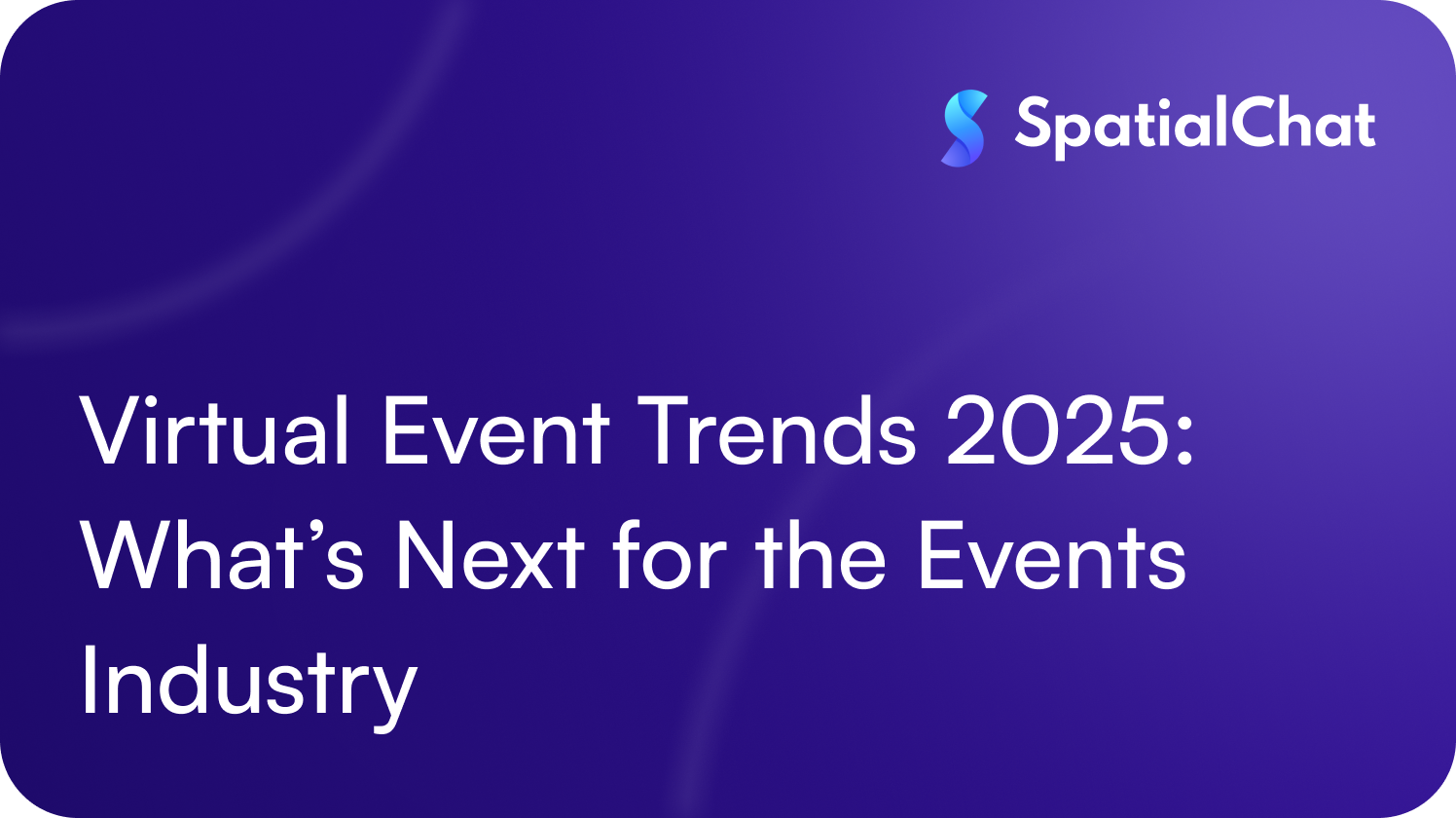In recent years, virtual events have dramatically reshaped the events industry. However, with the return of in-person gatherings, there’s ongoing debate about whether virtual events are losing relevance or simply undergoing transformation.
In this article, we’ll explore whether virtual events are truly on the decline or evolving into something new. We’ll also examine what led to their rise, the challenges event planners face today, and the trends shaping the future of virtual experiences.
Let’s dive into what lies ahead!
Virtual Event Trends to Watch in 2025
While some speculate that virtual events are waning, the data tells a different story. The global virtual events market is projected to reach USD 526.30 billion by 2028, growing at a CAGR of 24.92% from 2023 to 2028.
This impressive growth is fueled by continuous innovation across technologies, formats, and attendee expectations. But staying ahead of the curve can be tough, especially with how fast the landscape is shifting.
Here are some of the key trends set to define virtual events in 2025:
1. A Stronger Focus on Sustainability
Sustainability has become a central concern in the events world. Virtual and hybrid formats offer a more eco-friendly alternative to traditional events by reducing travel and resource use. However, not all platforms are created equal—choosing a virtual event partner that actively supports sustainability goals is increasingly important.
2. Smarter Personalization
Enhanced personalization is making virtual events more engaging and efficient. Expect more tailored session suggestions, networking opportunities, and content recommendations based on attendee preferences and behavior. As platforms get smarter, attendees will enjoy experiences that feel custom-built for them.
3. Data-Driven Decision Making
Virtual events generate a wealth of data, and organizers are becoming more adept at using it. From understanding audience engagement to refining content strategies, analytics are now central to event planning. In 2025, expect analytics to play an even bigger role in shaping how events are designed and delivered.
4. Creating Immersive Experiences with VR and AR
Virtual and augmented reality are redefining how attendees experience events. These technologies create immersive, interactive environments that go beyond traditional virtual formats.
Virtual reality (VR) can simulate real-world networking and exhibit spaces, making attendees feel like they’re truly “there.” Augmented reality (AR), on the other hand, can gamify the event experience, offer virtual tours, and replace physical elements like signage with interactive digital tools.
By removing geographical barriers, VR and AR open the doors to global participation. Looking ahead, expect trends like virtual tourism and enhanced navigation via AR to grow, offering attendees even more unique and accessible experiences.
5. Unlocking Efficiency with AI
Artificial intelligence (AI) is revolutionizing virtual event planning. From automating logistics to personalizing content and analyzing data, AI helps streamline nearly every phase of the event lifecycle.
Modern event platforms like SpatialChat are embracing this shift with AI-powered features such as:
- Smart content management
- Real-time reporting
- Segmented email campaigns
- AI attendee matchmaking
These tools not only save time and effort but also help organizers make smarter, more strategic decisions. As AI continues to evolve, its role in event planning will only deepen—shaping more intuitive, efficient, and impactful virtual events.
The key for event organizers? Stay informed, experiment with AI tools, and gradually integrate them into your planning process to remain competitive in 2025 and beyond.
6. Prioritizing Accessibility and Neurodiversity
Accessibility is no longer optional—it’s essential. As the event industry evolves, so too does its responsibility to be inclusive and accommodating for all attendees, including those with disabilities or neurodiverse needs.
Virtual events offer flexibility by allowing participants to join from anywhere, but true accessibility goes deeper. Forward-thinking platforms are leading the way with comprehensive accessibility tools that comply with WCAG 2.1 (AA level), ADA, and AODA standards.
These features include:
- Adjustable text sizes
- Live webinar captioning
- Custom accessibility profiles
- Screen reader support
- Tools tailored for visual, auditory, and cognitive impairments
By embracing accessibility, event organizers can reach wider audiences, enhance attendee satisfaction, and demonstrate their commitment to inclusivity.
Keeping Up with the Evolving Virtual Event Audience
To create virtual events that resonate in 2025, it’s essential to stay aligned with audience expectations and industry innovations.
Here’s how you can stay ahead:
- Know your audience: Use feedback surveys, social media, CRM data, and event analytics to understand attendee preferences.
- Embrace innovation: Choose platforms that offer immersive experiences and integrate emerging tech like AI, VR, and AR.
- Measure and improve: Track event performance using built-in analytics tools to make informed decisions and improve future events.
Partnering with an advanced event platform like SpatialChat can make all the difference. With robust tech features, accessibility options, and data-driven insights, platforms like these help you stay on trend—and more importantly, deliver exceptional experiences for your attendees.
Curious how these tools can work for your next event? Get in touch with our team and see what’s possible.
